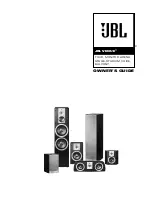
ASSEMBLY
7
Add Fuel
All fuel is not the same. If a starting or performance
problem is encountered immediately after new fuel has
been used, try another service station or change brands.
NOTE: This engine is certified to operate on gasoline.
Exhaust Emissions Control System: EM (Engine
Modifications).
Type of Fuel
1.
Always use clean, fresh, UNLEADED gasoline with a
minimum of 87 octane/87 AKI (91 RON). DO NOT
mix oil with fuel. DO NOT modify the engine fuel
system or carburetor to run on alternative fuels.
NOTE: Fuel with up to 10% ethanol (gasohol) or up to
15% MTBE (methyl tertiary butyl ether), is acceptable.
IMPORTANT: Use of any fuel other than those approved
above will void warranty. Some areas require that fuel
pumps be marked if the fuel contains alcohols or ethers. If
you are not sure if your fuel contains alcohol or ethers that
are different than those approved above, then check with
the service station operator.
2.
Clean area around fuel fill cap, remove cap.
3.
Slowly add unleaded gasoline to fuel tank. Be careful
not to overfill. Allow about 1.5" of tank space for fuel
expansion, as shown in Figure 1.
4.
Install fuel cap and let any spilled fuel evaporate before
starting engine.
To avoid engine performance issues, the fuel system should
be treated with a fuel preserver or emptied before storage
of 30 days or longer.To protect the fuel system from gum
formation, use Briggs & Stratton FRESH START™ fuel
stabilizer plus, or FRESH START™ continuous fuel
preserver (concentrated liquid cartridge), or FRESH
START™ preservative & stabilizer (granular). If fuel
preserver is not used, drain the fuel tank, start the engine
and let it run until the fuel lines and carburetor are empty.
Use fresh fuel next season. See “Storage” on page 19 for
additional information.
NEVER use engine or carburetor cleaner products in the
fuel tank as permanent damage may occur.
High-altitude use
Operation at high altitude (over 5,000 feet), may require a
high-altitude carburetor jet kit to improve performance and
decrease fuel consumption. See your local authorized Briggs
& Stratton dealer for more information.
Figure 1 — Typical Fuel Expansion Space
1.5” Air Space
WHEN ADDING FUEL
• Turn generator OFF and let it cool at least 2 minutes before
removing fuel cap. Loosen cap slowly to relieve pressure in tank.
• Fill fuel tank outdoors.
• DO NOT overfill tank. Allow space for fuel expansion.
• Wait for spilled fuel to evaporate before starting engine.
• Keep fuel away from sparks, open flames, pilot lights, heat, and
other ignition sources.
• DO NOT light a cigarette or smoke.
Fuel and its vapors are extremely flammable and
explosive.
Fire or explosion can cause severe burns or
death.
WARNING
Summary of Contents for 30236
Page 21: ...NOTES 21 NOTES...
Page 24: ...NOTES 24 NOTES...
Page 45: ...REMARQUES 45 REMARQUES...
Page 48: ...REMARQUES 48 REMARQUES...
Page 69: ...NOTAS 69 NOTAS...








































